Disruptive Innovation : Trends and Technologies
What is the meaning of disruptive innovations?
In simple terms, disruptive innovation occurs when the traditional value drivers in an existing market get significantly altered. A new player enters the market with a business model or technology that adds value, which is different from the current offerings.
Disruption innovation comes under four categories of changes which can be seen in the innovation matrix:
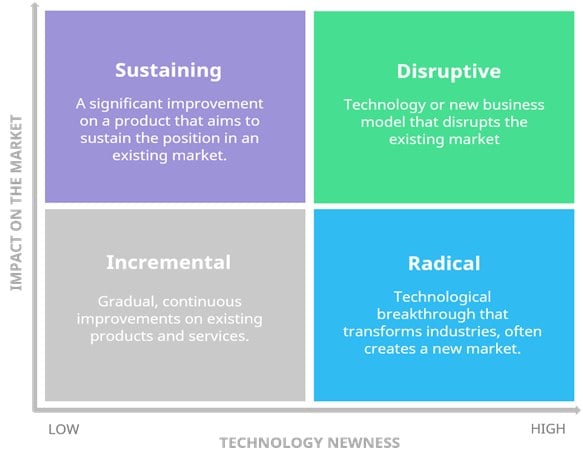
Source: Viima
What are the characteristics of disruptive innovations?
The idea of disruptive technology was introduced by Clayton Christensen, a famous American business consultant, in his book The Innovator's Dilemma, published in 1997.
In business terminology, disruptive technology comprises the innovations that optimize a product or service in a manner that is unexpected by the market.
The characteristics of disruptive innovations are:
- Low pricing to gain more customers
- Higher risk because the solution either disrupts an existing market or creates an entirely new market segment
- The measure of value is fundamentally changed
- Frequently, this involves new technology and/or a new model of business
- Start gradually until it reaches the mainstream. Then, it grows exponentially.
When the globe is witnessing the fourth industrial revolution, disruptive technologies are evolving at an unprecedented rate. Businesses who fail to adopt disruption in their technologies will get replaced. As per a survey, 50% of the Fortune 500 organizations will be returned in the upcoming decade due to these powerful technologies. Only 29% reported investing heavily in disruptive technologies.

Companies can survive this disruption phase by embracing the capability to adapt to the change and implement the advanced technologies strategically for long-lasting business growth.
The real challenge for businesses is to make sense of such rapid disruptive technological innovations. The relevant implementation also means the ability to gauge how these powerful breakthroughs can impact their business growth.
Let’s explore the eight vital disruptive technologies that can potentially shape the present and future of the business landscape.
Which are the eight disruptive innovation technologies that organizations should implement in 2020 and beyond?
From the 250 discrete technologies tracked by PWC, eight are identified as the most disruptive and essential technologies that matter in 2020 and the coming years. Their long-lasting impact will drive businesses, customers, and employees to the next level.

Let’s explore them in detail.
These eight core disruptive technologies will matter to businesses, irrespective of their size and industry, over the next three to five years.
1. Artificial intelligence (AI)
Artificial intelligence enables machines to mimic human thought processes. It tops the list of disruptive technologies because computer programs can learn, understand, and act when they receive data. Their potential extends to creating meaningful products and services.
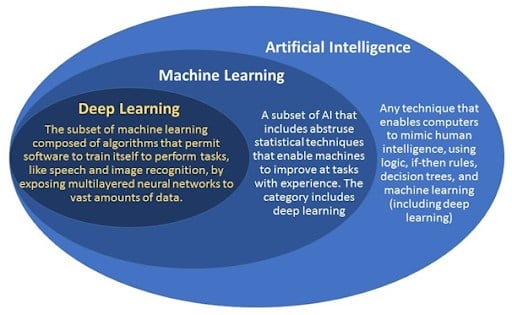
Source: Geospatial World
The application of artificial intelligence extends to every field. In hospitals, the library of scanned images using AI can quickly and accurately diagnose disease. Even during COVID-19, AI has helped scientists study the spread of the virus. Finance companies can assess the digital footprint of a customer to determine their possibility of loan default. Banks can use AI to cross-sell services in the present time when the footfall to the branch has massively decreased.
2. Advanced Virtual Reality (VR), Augmented Reality (AR), Mixed Reality (MR) & Extended Reality (ER)
All the four disruptive technologies leverage sound, video, and graphics to create an illusional immersive visual experience for the users with the help of computers.
Although there’s a slight difference between them, their objective is to create unreal stimulating experiences.
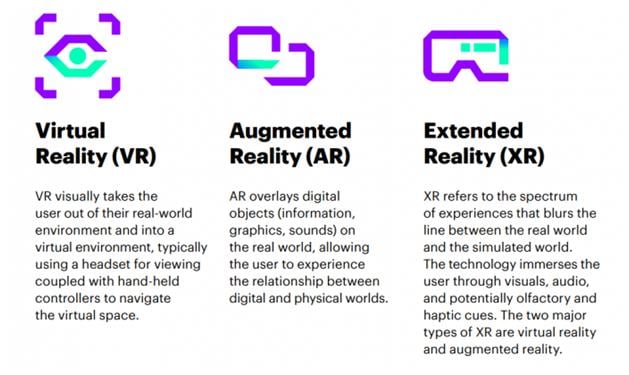
Source: Accenture
They are commonly used in industries such as real estate, retail, construction, disaster risk analysis, and tourism. It helps businesses in offering an immersive shopping experience to the customers.
Additionally, it helps marketers identify interactive strategies and analyze consumer data to discover insights based on which organizations can plan future policies.
3. Internet of Things (IoT)
IoT is about connecting any equipment with the internet. While the most common examples that come to mind are wearables and fitness trackers, IoT applications extend to washing machines, coffee makers, headphones, and the car engine that can be connected with the internet.
The Indian Express published a report by global research organization Software.org predicting that by 2020 50 million devices ranging from TVs to trucks, and pipelines, to watches and smartphones, will be connected with the help of IoT.
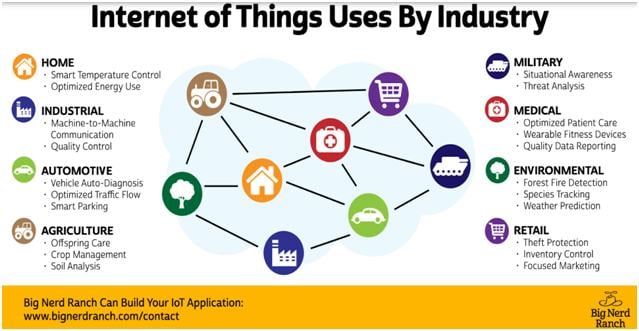
Source: Big Nerd Ranch
4. Blockchain
Blockchain is also known as the “digital ledger.” It is the disruptive innovation that underpins digital currencies such as Etherum, Litecoin, and Bitcoin.
Through a cryptographic process, blockchain technology provides a record of transactions and keeps the history of the participants at every step of the process. The image below shows the working of blockchain.
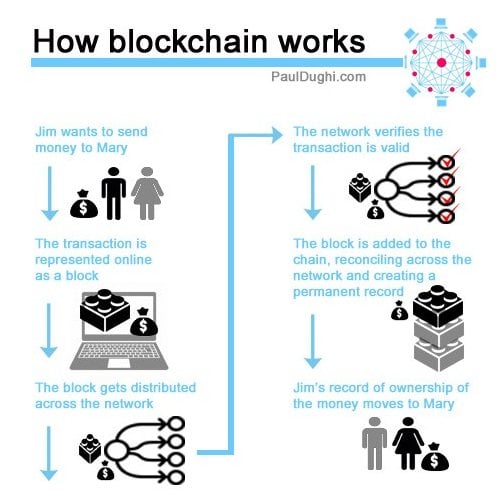
Source: Medium
Fintech organizations have already started digitizing transactions through the blockchain. In a matter of time, blockchain will optimize the existing systems of payments and currency on a massive scale.
You may also like: The Pandemic Cybersecurity Job Demand Surge: What Makes it easier to crack them now?
5. 3D Printing
3D Printing that was available for a decade witnessed mass adoption recently when it became cheaper. It deserves a place in the list of disruptive innovations for 2020 because of its use by students, factories, hobbyists, and businesses alike.
Production and manufacturing industries are the two critical beneficiaries of 3D printing technology because it helps in optimizing the workflow while minimizing the costs.
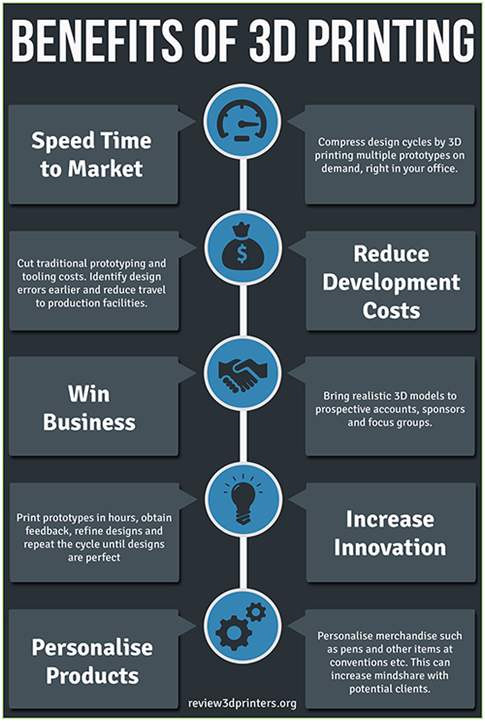
Source: 3D Printers Online Store
6. Autonomous Things (AuT) Or Internet of Autonomous Things (IoAT)
With the help of AI algorithms and Machine Learning (ML), AuT or IoAT enables devices to move freely without human intervention. Although this disruptive technology is yet to be widely adopted, progress is seen in the form of robots and drones.
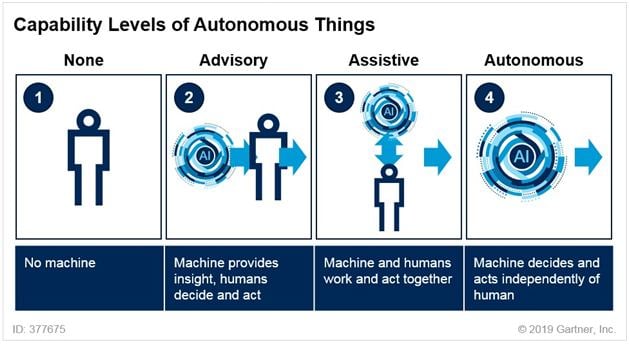
Source: InertialSense
Autonomous technology is useful in the manufacturing sector and in the digital ecosystem such as smart cities, smart supply chains, and smart homes.
7. Drones
The real-life applications of drones include survey and mapping, asset maintenance, environmental monitoring, and surveillance during emergencies. Presently, a lack of regulatory guidelines is a significant challenge preventing the mass adoption of drone technology.
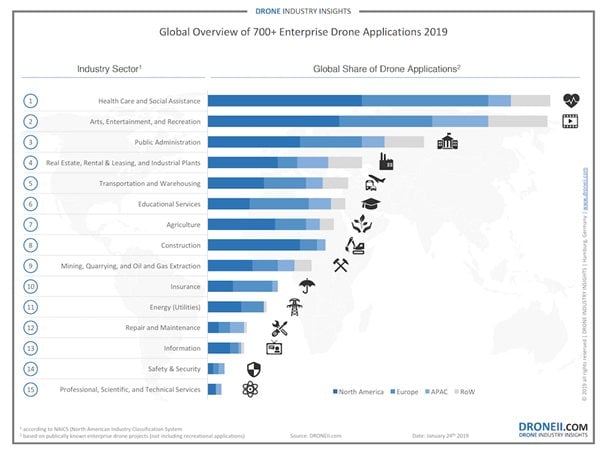
The Drone Application 2019 Report summarises how drones have been applied, for what activities, and in which industries.
8. Robotics
Robotics is a notable innovation that makes its mark as a disruptive technology because advanced robots perform tasks thought to be hard or expensive to automate. They have enhanced dexterity, senses, and intelligence; as a result, society could benefit massively.
Robotic prosthetics, robotic surgical solutions, and nanorobotics have being put to use.
How to prepare for disruption?
From a business perspective, the next disruptive idea capable of generating billions of dollars in revenue would not happen in a day. You will need the right people, the agility, and the capacity to spot the possibilities beyond the industry norms. Adding to that, the right time to get people to care about the product or service.
Here are the three tips to consider while working on developing disruptive technologies for your business.
1. Listen to your users and keep an eye on the industry trends - Ask your users the right question about their needs and wants.
Observe your competitors and what they are doing differently. Don’t miss out on new prospects by only focusing on what is working for you.
2. Focus on creating a scalable business model – You will have to describe, challenge, design, and pivot your business model to determine a scalable strategy. Take into consideration the critical external and internal factors to convert your idea into a business.
3. Don’t expect the disruption to happen immediately – Disruption takes time and is a result of smaller and incremental improvements. You will face obstacles in bringing the product to the market and making it sustainable.
Create a roadmap to guide your direction and track the progress.
Wrapping up – Disruptive innovations in technology means doing things differently and changing the general notions of the market. In essence, a combination of new technology and a unique business model is the critical factor that enables disruption.
From Project and Quality Management to Data Science and Machine Learning, check out our workshops.
